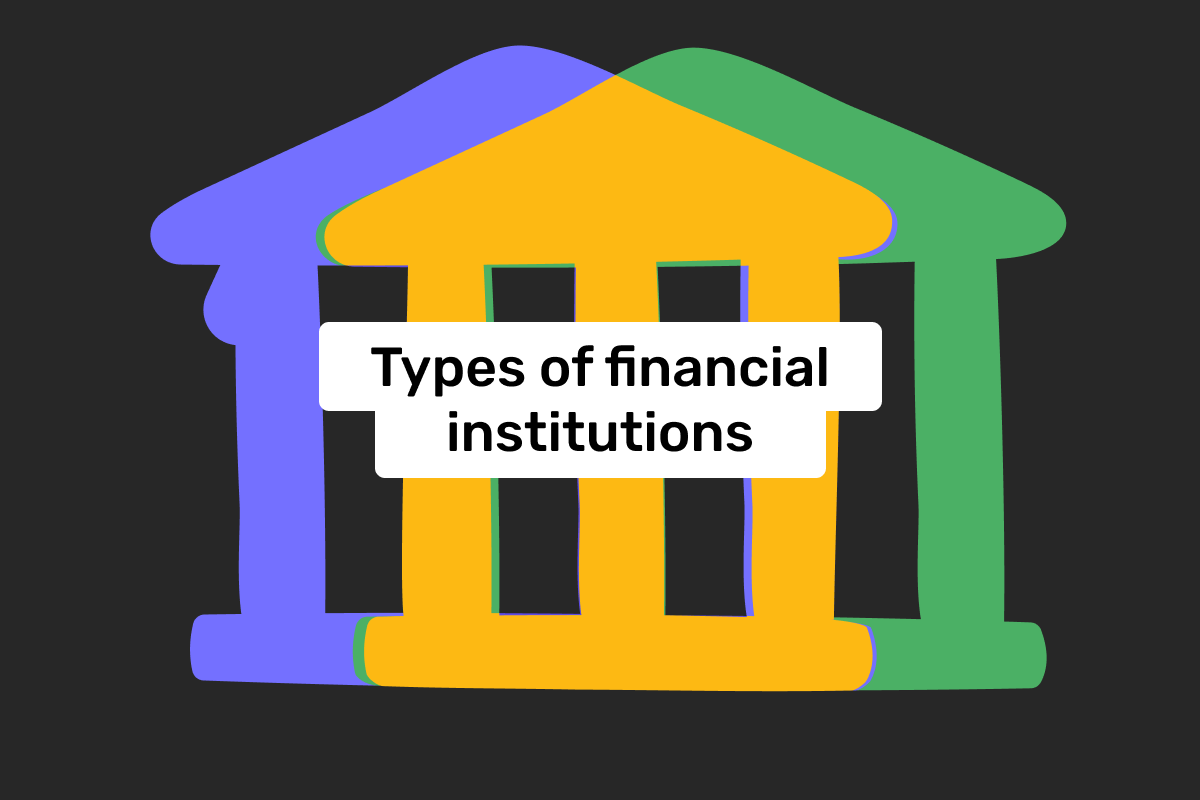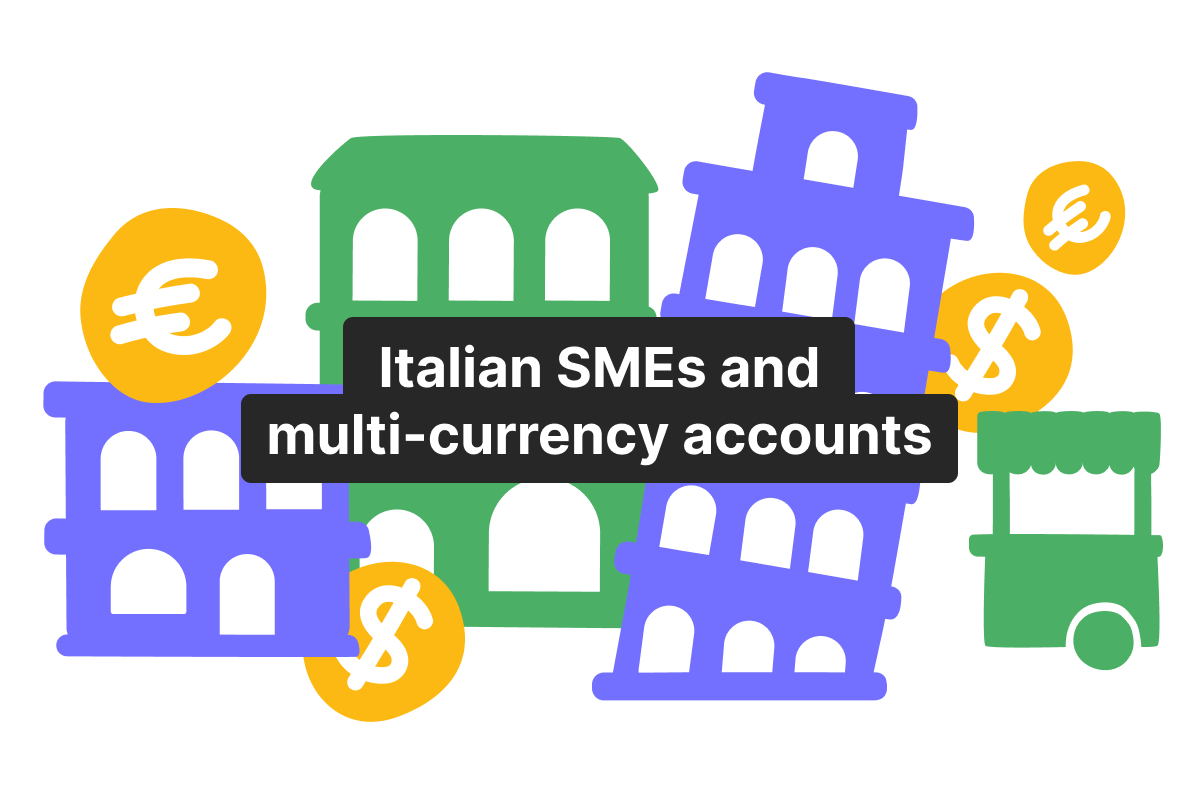Some people commonly consider financial institutions to be synonyms for banks. But financial institution is a much broader term. It includes many types of international financial organizations which provide different kinds of services.
Want to learn more about banking institutions across the board? Genome’s team is here to explain the most common types of financial companies. Let’s proceed!
Financial institutions: definition
The “financial institution” meaning is quite simple. These financial entities provide services to individuals, businesses, and/or merchants. For example, financial companies are involved in various operations, such as transfers, monetary transactions, currency exchange, loans, investments, etc.
Such institutions are strictly regulated by policies enabling their transparent and secure work.
There is a high chance that you have dealt with some type of financial business at least once for private matters or business errands.
Open an account
in Genome online
What are the different types of financial organizations?
As mentioned, financial institution is a broad term, meaning that multiple different banks and companies can be classified as such. So let us give an overview of some of the most common and major financial institutions.
Central banks
Now, this is a title you may have heard before. Central banks are national banks that control their country’s currency and monetary policies. Such banks have different names. For instance, the Bank of Lithuania is the central bank of the Republic of Lithuania. And the UK has the Bank of England.
Central banks are primarily responsible for managing financial institutions and overseeing their activity in their respective countries. Central banks don’t work with private and business clients directly. Instead, they finance other banks, which, in turn, provide services to the public.
Retail banks and commercial banks
These two types are something most people think of when they imagine traditional banks. How come? That’s because they primarily serve customers. The difference is that retail banks cater to individuals and their personal needs, while commercial banks work with businesses.
Different banks in this category provide pretty diverse financial features. Some of these include the provision of checking and savings accounts, personal and mortgage loans, certificates of deposit, cards, etc.
Investment banks
It is a category of financial companies with more sector-specific services. Investment banks help businesses and corporations that need investments for the company launch or to run business operations. They do so by serving as an intermediary between investors and such corporations.
Investment banks also cater to individuals and even governments, helping them in raising capital and providing equity research, brokerage, and advisory services.
Not only that, but investment banks also match up buyers and sellers of securities (which are financial assets like equities that can be traded), can be advisors during Mergers & Acquisitions, manage investments, and more.
Insurance banks and companies
This type of financial organization contrasts the other ones we described prior a lot. Such a company aids people and companies to protect them from future losses, which can be the result of property damage, disabilities, poor health, death, or other unfortunate events.
Thus, insurance companies sell individuals and businesses insurance policies to cover financial losses. For instance, a client can use such a banking institution to get health insurance, homeowner insurance, etc.
Internet banks
Another category of financial companies that you may be familiar with. As you might have guessed, these are akin to different banks from the retail and commercial categories. Thus, internet banks also provide diverse services to personal, business, and merchant clients.
The key difference is that internet banks don’t have physical branches like retail and commercial institutions. Instead, they provide all their banking features online – on their websites or via apps.
As for the services, internet banks differ greatly. Some cater to start-up companies exclusively, others work only with merchants, and a bunch offer their banking instruments to both private clients and companies. Generally, the services include savings and current accounts opening, issuance of cards, loans, merchant tools, payment processing, etc.
It is worth noting that internet banking is a part of a wider phenomenon – electronic banking, which is a type of banking that provides a wide range of services and is done via laptops, phones, tablets, and so on. There are multiple kinds of e-banking, such as internet banking, mobile banking, EMIs, Electronic funds transfer, ATMs, Electronic Clearing Services, smart cards, etc.
Open an account
in Genome online
Mortgage companies
The name gives away what exactly these financial businesses do. Mortgage companies specialize in funding home loans. They analyze how much specific customers are able to borrow and then provide the best loan options for them.
Usually, such companies work with individuals, but some of them take on corporate clients as well.
Savings and loan associations (Thrift banks)
These financial companies have a particular structure. Although their services are similar to those of retail and commercial banks, they are usually privately owned, primarily funded by consumer deposits, and overseen by shareholders and the said consumers.
Clients can use such loan institutions for home mortgages, checking accounts, and loans.
Credit unions
Credit unions are financial businesses that, at first glance, seem to operate like traditional banks. But there’s a difference. Credit unions are not-for-profit financial organizations owned by people that use their services. So, each cooperative member buys shares to offer financial products to other union members.
Historically, individuals could join the credit union if they have something in common with the union members – like the industry they work in or the community. Nowadays, this rule does not always apply.
Credit unions’ services vary, but you can usually get savings accounts, insurance, loans, mortgages, and debit cards.
Different banks are many, but what is Genome exactly?
Now that we described many examples of financial institutions let us introduce you to Genome!
We are an Electronic Money Institution that is licensed and supervised by the Bank of Lithuania. Genome is an all-in-one platform for individuals, businesses, and merchants*!
So, what are Electronic Money Institutions? These are financial companies created to better adapt the banking industry to digitalization. These legal entities make financial services more accessible and convenient to multiple groups of private and corporate clients. EMIs operate online and provide similar services to traditional banks. Plus, they have a license to disburse electronic money, which is a digital alternative to cash, allowing for seamless cashless payments via electronic means.
Let’s take a look at Genome to better understand which services EMIs provide.
With us, you can start personal and business wallets in different currencies – euros, US dollars, and British pounds, and have multiple accounts for different private and corporate purposes.
Our financial company offers SEPA, international transfers, and mass transfers for clients’ convenience. You can also order physical and virtual debit Visa cards, which are compatible with Google Pay, Apple Pay, and Garmin Pay.
And, as for our merchants*, they can accept payments in over 20 currencies, offering your customers 40+ local payment methods*. Other merchant services include full-scope reports, plugins for the most popular e-commerce platforms, multiple merchant account openings, and more!*
Feel free to check our website for more information.
*Please note that Genome’s merchant services have been temporarily unavailable since September 2024.
Open an account
in Genome online
FAQ
What is a financial institution?
A financial institution is a type of financial business that provides different banking services that cater to varying types of clients and their distinct needs. They handle monetary and other financial features that people may require. We described the main kinds of financial organizations in the article. The main difference between them usually lies in the particular features they provide, which clients they work with, and how they generally operate. Governments and banking policies regulate financial institutions to ensure the security of clients that use them.
What is considered a financial institution?
Companies that offer any kind of financial services – from loans to account opening, etc. are considered financial institutions.
How does a financial institution work?
The main purpose of financial organizations is to regulate the money supply and provide different banking services to a wide variety of customers. Their work varies depending on the features they offer.
What are the main types of financial institutions, and how are they different?
The most common financial businesses and institutions are retail banks, commercial banks, mortgage companies, internet banks, investment banks, central banks, savings and loan associations, and credit unions. Find out how they differ in our article.
What products and services do financial institutions offer?
Any type of banking features you can imagine: account opening, money transfers, mortgages, loans, investments, and many more.






